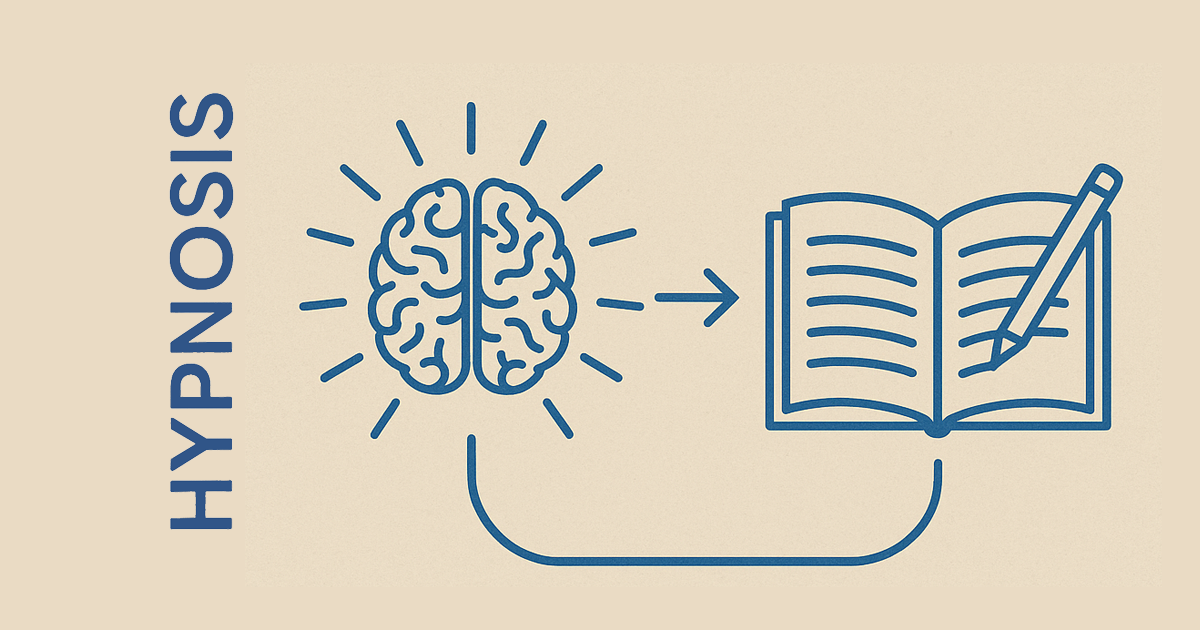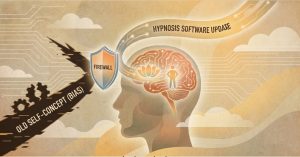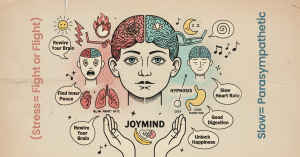Life moves in cycles—growth, decay, and renewal. At any given moment, you may find yourself living in a story that no longer fits. Maybe it’s a story of “I’m not good enough” or “Nothing ever changes.” The good news? That story can be rewritten.
You don’t need to believe in hypnosis for it to work.
You just need to be open to the idea that your mind is flexible—and that’s exactly what neuroscience confirms.
This article explores how hypnotherapy, when grounded in science and emotional insight, can help you reshape the narrative of your life—internally and externally.
🧬 The Science Behind Rewriting the Self
Our brains are not fixed. They’re constantly changing in response to our experiences, thoughts, and behaviors—a process called neuroplasticity (Kolb & Whishaw, 1998). This means that even deeply rooted beliefs and emotional patterns can shift, given the right conditions.
Hypnosis provides those conditions. It slows brainwave activity and helps activate key brain areas tied to memory, emotion, and imagination (Oakley, D. A., & Halligan, P. W. (2009). In this focused, receptive state, the mind becomes more open to letting go of old stories and installing new, healthier ones.
You’re not asleep. You’re not being controlled. You’re simply more aware of your inner world—and that awareness is where change begins.
✨ The Role of Emotional Imagination
A key part of hypnotherapy is emotional imagination—the ability to feel into a new experience as if it were real. Research shows that the brain reacts to vividly imagined events in much the same way it reacts to real ones (Ganis, Thompson, & Kosslyn, 2004).
This means that imagining yourself as calm, confident, or connected actually helps lay down new neural pathways to support those states in everyday life.
In Jungian and Interdisciplinary Analyses of Emotions, I explain:
“The brain and body respond to symbolic and imaginal experiences as if they were materially real—creating new neural maps for behavior, self-concept, and relational capacity” (Glock, as cited in Brodersen, Meier, & Musso, 2025).
This is why hypnotherapy can lead to long-lasting shifts. It helps rehearse a new way of being—internally—so you can embody it externally.
🔁 Breaking the Loop of Self-Abandonment
Most of us don’t consciously reject ourselves—but we do it in subtle ways: ignoring our needs, staying stuck in toxic relationships, putting others first until we feel invisible.
These habits become part of our mental “operating system.” Left unchecked, they shape our identity.
Hypnotherapy interrupts this loop. It allows people to connect with their emotional core, feel their unmet needs, and begin to respond differently. It’s not about forcing change. It’s about creating a safer inner world where new behavior feels possible.
🌿 The Joymind 3-Step Breakthrough Method
At Joymind, we use a practical, science-informed approach to hypnotherapy that helps people move from confusion to clarity, from stuckness to transformation:
-
Break Through the Surface – Quiet mental noise and gain emotional clarity.
-
Break Open the Pattern – Explore the emotional root of the issue.
-
Break Into the Future – Imagine and rehearse new patterns of thought, behavior, and identity.
This method blends neuroscience, narrative work, and the art of hypnotic suggestion to gently rewire the brain for change.
🧒 Case Snapshot: Sarah’s Inner Child
Sarah came to hypnotherapy feeling stuck and invisible. During our sessions, she visualized her younger self being loved, seen, and protected—something she never experienced growing up.
Over time, that inner image created new feelings of self-worth. Her brain stopped reinforcing the old narrative of neglect and began building one of self-trust. Her relationships improved. Her sleep deepened. And she no longer felt like a stranger to herself.
This transformation didn’t come from talking about the problem—but from feeling the solution.
🌸 Rewire Your Story
Hypnotherapy isn’t a trick or a shortcut. It’s a tool—one that uses the brain’s natural capacity for change to help people reframe their past and step into their future.
If you’re skeptical, that’s okay. Healthy skepticism is a sign of discernment. But if you’ve tried other methods and still feel stuck, it may be time to try something different.
You can’t always think your way out of the problem.
Sometimes, you need to imagine your way into the solution.
📚 References
- Brodersen, E., Meier, C. A., & Musso, C. (Eds.). (2025). Jungian and interdisciplinary analyses of emotions: Method and imagery. Routledge. https://www.routledge.com/Jungian-and-Interdisciplinary-Analyses-of-Emotions-Method-and-Imagery/Brodersen-Meier-Musso/p/book/9781032932200
- Ganis, G., Thompson, W. L., & Kosslyn, S. M. (2004). Brain areas underlying visual mental imagery and visual perception: An fMRI study. Cognitive Brain Research, 20(2), 226–241. https://www.sciencedirect.com/science/article/abs/pii/S0926641004000709
- Kolb, B., & Whishaw, I. Q. (1998). Fundamentals of human neuropsychology (4th ed.). W. H. Freeman. Oakley, D. A., & https://amzn.to/44skkl7
- Oakley, D. A., & Halligan, P. W. (2009). Hypnotic suggestion and cognitive neuroscience. Trends in cognitive sciences, 13(6), 264–270. https://pubmed.ncbi.nlm.nih.gov/19428287/
















